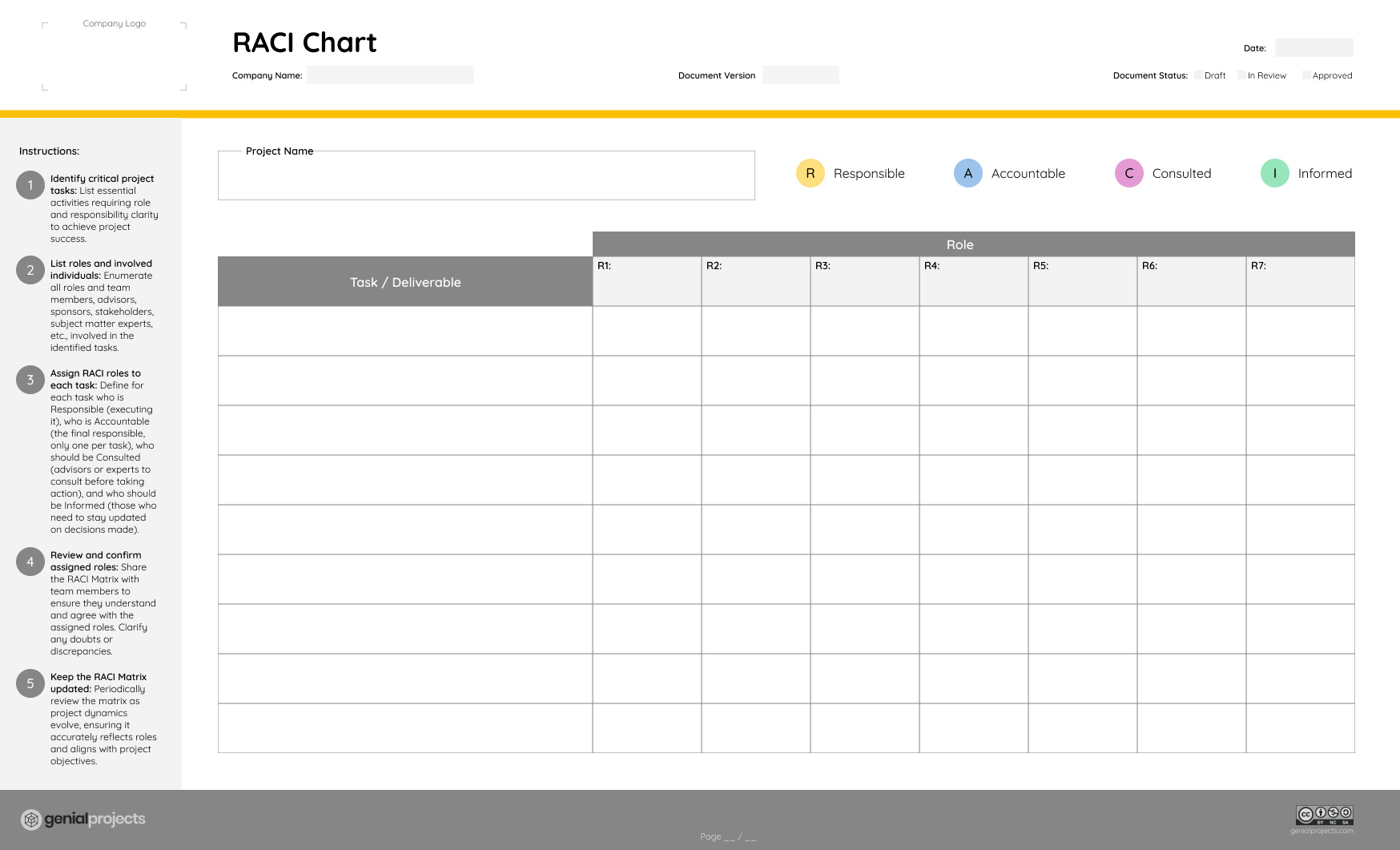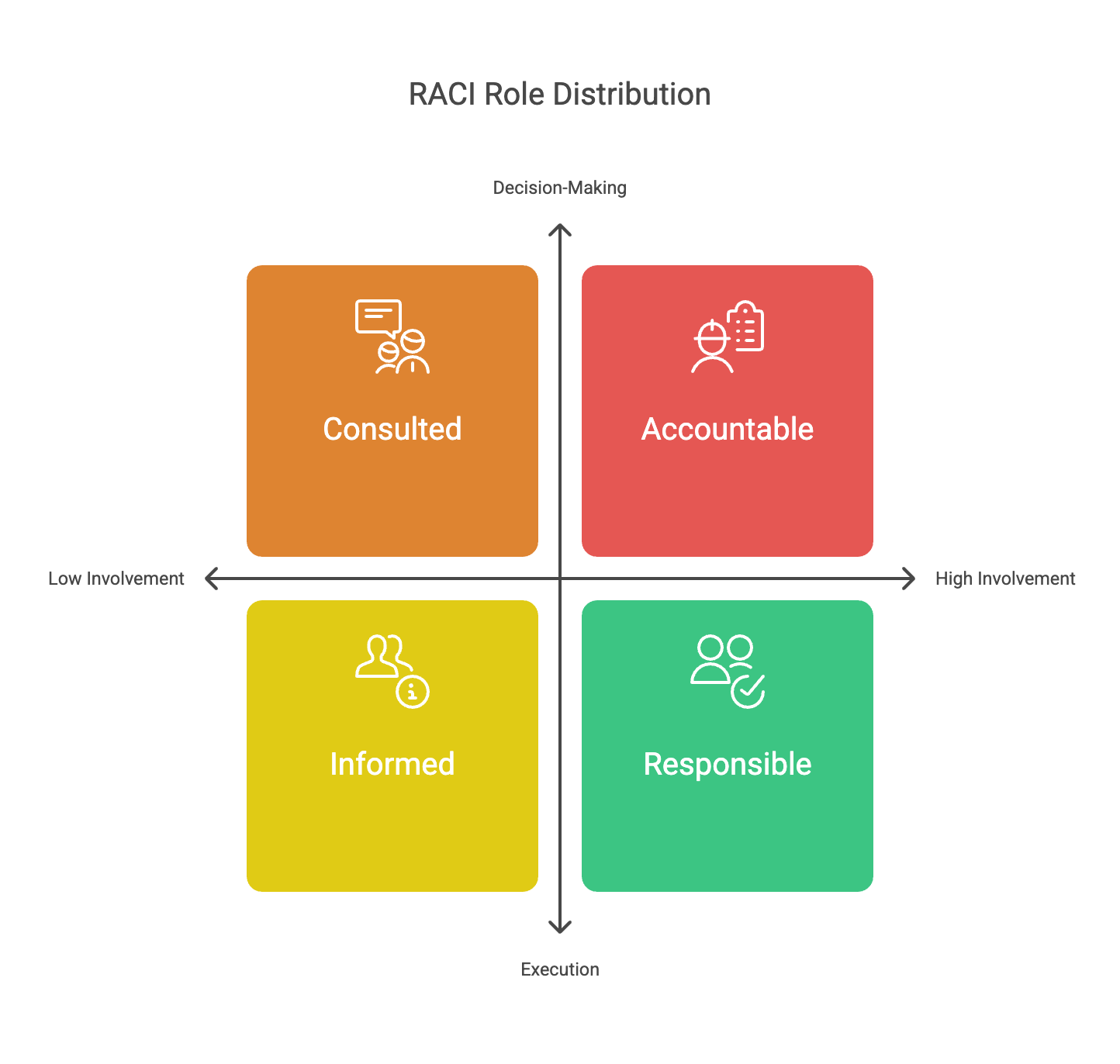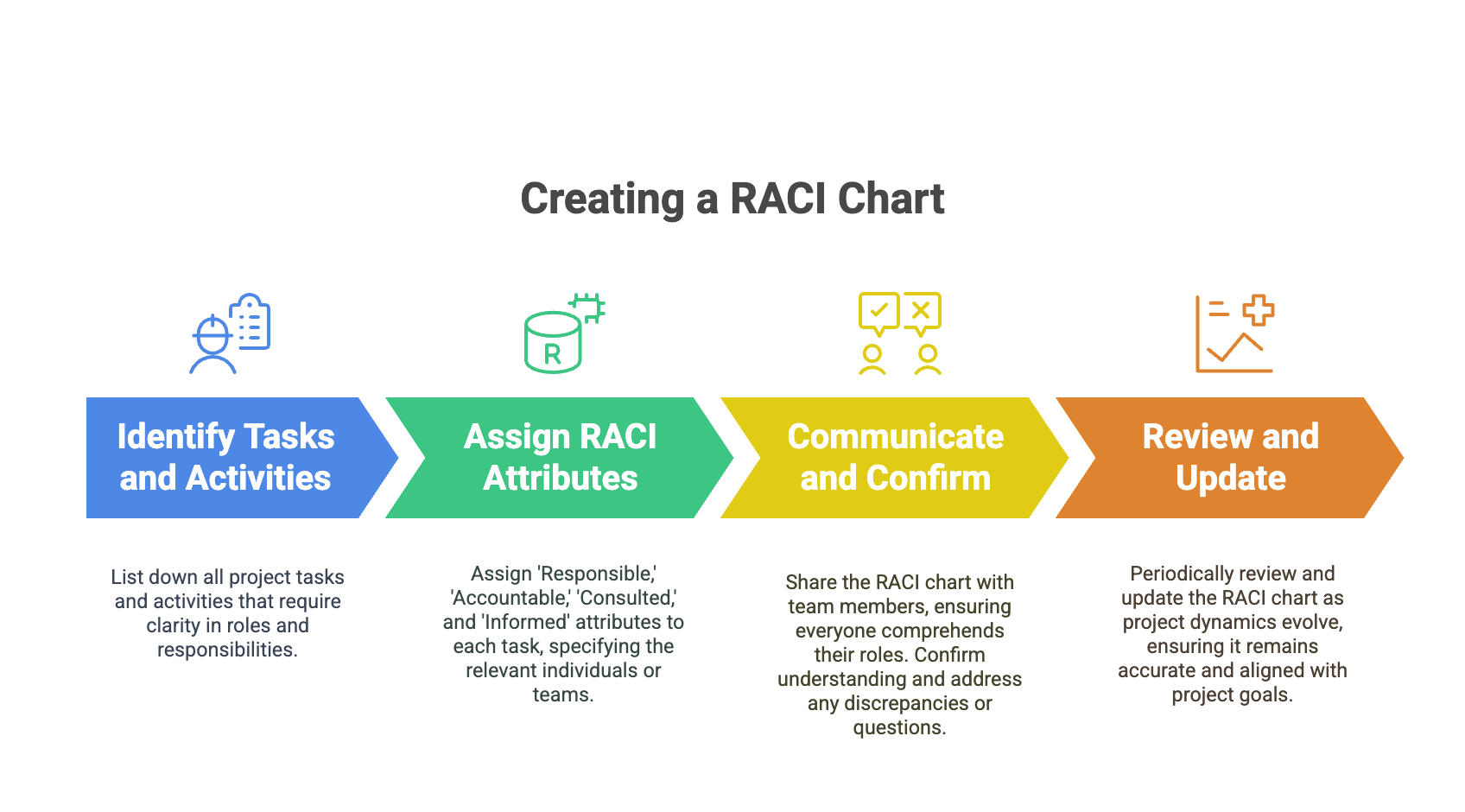Clearly defined roles and responsibilities are essential to deliver good results in projects. Understanding the RACI chart is akin to possessing a guiding compass—it defines and manages who does what. As you navigate through your projects, comprehending the importance of RACI charts becomes invaluable. This article is your essential guide, empowering project leaders like you to steer their projects seamlessly towards success.
What is a RACI Chart?
At its core, a RACI (Responsible, Accountable, Consulted, Informed) chart is a visual tool that delineates the roles and responsibilities of team members within a project or task. It provides a clear breakdown of who is Responsible for executing specific tasks, who is Accountable for the overall success, who needs to be Consulted for input, and who must be Informed about progress. This matrix-like chart fosters transparency by explicitly defining each participant's role, reducing confusion and streamlining workflows.

Benefits of a RACI Chart
The implementation of RACI charts brings forth a multitude of advantages, especially in complex tech-driven projects. Firstly, it establishes accountability, ensuring that there's a clear 'go-to' person for each task or decision. Secondly, it minimizes confusion by delineating roles, reducing overlapping responsibilities or gaps. Thirdly, it enhances communication channels, fostering collaboration and aligning everyone with project objectives.
Key Elements of a RACI Chart
A RACI chart comprises four key elements: Responsible, Accountable, Consulted, and Informed. The 'Responsible' denotes the team member or members who are tasked with executing a specific activity. The 'Accountable' role signifies the ultimate decision-maker, the individual who bears the overall responsibility for the task's success or failure. The 'Consulted' individuals are those whose input and expertise are sought during the task execution. Lastly, the 'Informed' are the stakeholders who need updates or notifications regarding task progress but aren’t directly involved in its execution.

The Role of Project Manager in Establishing Team Dynamics
Project managers play a pivotal role in the implementation and utilization of RACI charts. They act as orchestrators, ensuring the chart accurately reflects the team's dynamics, strengths, and skill sets. Moreover, project managers facilitate discussions to define roles and responsibilities, ensuring alignment with project objectives and fostering a collaborative environment where each team member understands their contribution.
Creating a RACI Chart: Step-by-Step Guide
- Identify Tasks and Activities: List down all project tasks and activities that require clarity in roles and responsibilities.
- Assign RACI Attributes: Assign 'Responsible,' 'Accountable,' 'Consulted,' and 'Informed' attributes to each task, specifying the relevant individuals or teams.
- Communicate and Confirm: Share the RACI chart with team members, ensuring everyone comprehends their roles. Confirm understanding and address any discrepancies or questions.
- Review and Update: Periodically review and update the RACI chart as project dynamics evolve, ensuring it remains accurate and aligned with project goals.

Key Takeaways
The integration of RACI charts into project management practices not only enhances efficiency but also cultivates a culture of accountability and clarity within teams. They serve as a beacon guiding teams through complex projects, ensuring everyone knows their role, leading to smoother workflows and successful project outcomes.